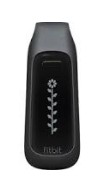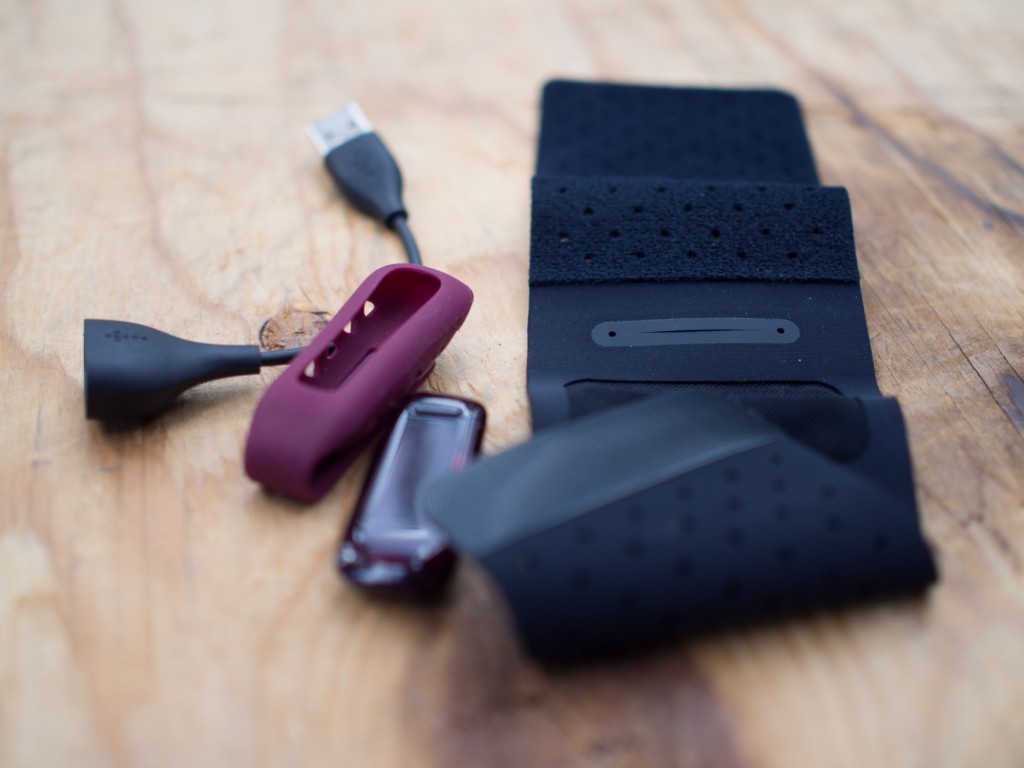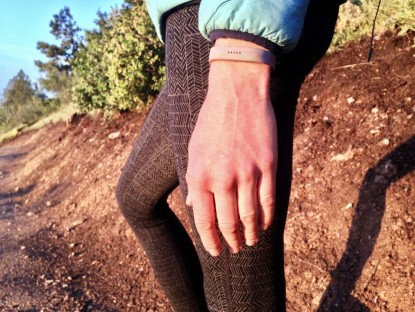Fitbit One Review
Our Verdict
Our Analysis and Test Results
This pedometer is the only product in our test that records sleep and has step count visible on the device itself. It is also only one of three products we tested that uses a rechargeable battery.
Performance Comparison
Data Management
FitBit has been in this game for a relatively long time. In fact, the term FitBit has a bit of traction as the generic word for compact, self-contained activity tracking devices. With this history, the company has clearly refined their data management scheme. Some data is viewable on the small screen on the device while the remainder syncs readily and easily to your phone. Once on your phone, the data makes sense and is easy to compare from one day to the next.
Only the Striiv Smart and Ozo Fitness SC2 have on-device displays that compare. However, neither of these sync with an app. The other app-enabled products have little to no on-device data viewable. For these reasons, the data management of the FitBit One leads the field and fully sets it apart for our Editors Choice award.
Depth of Data
Like all the products we tested, the One captures easily interpreted step count information. It counts movement in terms of steps, and then derives a distance estimate from that step count. The One also evaluates one's sleep. Interpreting and gauging the accuracy of the sleep data collected is tricky. What is useful, however, is comparing your subjective assessment of sleep quality to the information collected by the device and then comparing multiple nights of data and finding trends and correlations. All the sleep tracking products that we tested do this well enough. What sets them apart is the method of switching from daytime mode to sleep mode. The One must somehow be prompted to change the algorithm.
Fortunately, with the One, moving the device from day clothes to night clothing serves as a reminder to change modes. If, however, you go to bed wearing the device but without having changed modes, you can go into the app the next day and indicate when you were asleep. Other, better scoring devices in our test, including the close competitor MisFit Link, switch automatically into sleep mode.
In terms of user-entered data, Fitbit's robust app is one of the better for capturing and correlating other types of information. Their comprehensive food and fluid consumption recording protocol is effective and thorough. Of the four app platforms we tested, the Misfit is more rudimentary than the Fitbit while the Jawbone, Spire and Bellabeat LEAF both have more sophisticated apps for collecting user data.
Accuracy
With a tested step count varying by 4.3 percent from actual, the One is just above average in terms of accuracy. The Top Pick CSX Simple Walking 3D is more accurate, catching all but .4 percent of steps in repeated testing. At the other end of the spectrum, the Misfit Flash Link has an error percentage of 11 percent. This means that the recorded step count is 11 percent different from the actual. In the grand scheme of things, it is important to gauge accuracy in the context of how a device is actually used. If you are comparing your daily step count to a friend, the accuracy of their respective devices will matter. Your step count on a CSX has greater value to any comparison than hers on the One. However, if I am simply comparing one day's activity to the next, and I can assume that any error in the instrumentation is consistent, all I need to know is whether I did more or less than yesterday, and by roughly how much I varied. In this latter, far more common scenario, the actual accuracy of the device doesn't matter that much.
Ease of Use
All the devices we tested are easy to set up. Small electronics manufacturers have come a long way in terms of streamlining the setup and function of their products. In one small way, this contender lags behind the rest of the pack. In our 2016 product selection, only four devices use rechargeable batteries. The One, by Fitbit, and the Striiv Smart both need to be charged initially and then recharged about every week. The other products in our review all have user replaceable watch batteries that last six months to a year. There are pros and cons to each strategy. Rechargeable batteries cost less and require nothing more than periodic plugging in. Reusable batteries last much longer but don't power as robust of feature sets.
This award winning pedometer is the only product that tracks sleep, syncs to a smartphone, and has a comprehensive on-device screen. All these features require considerable battery power that is best accomplished by periodic recharging. In the end we understand the thought process these companies undergo, but we do wish we could have all the features of the One without the weekly recharging.
Portability
How you carry your device is purely personal preference. It seems that more people prefer clipped carry, and the market reflects that. Like our select reviewed list, the vast majority of products available are set up for clipped wear. However, if that doesn't work for you and pocket carry does, the One can be an excellent choice. Its tiny size and rounded profile virtually disappears in your pocket. The Bellabeat LEAF offers more carry options, but is a bulkier package.
Best Applications
If you want a proven product that can be worn in a pocket or on your belt, this is the product for you.
Value
The One is among the most expensive devices in our test. Only the Bellabeat LEAF is more expensive, and for that you get more carry options and more data collection. At this upper end of the price spectrum, value is pretty closely tied to functions. Pay more, and get more functions. The LEAF has arguably more functions than most people need, although for that population we award the LEAF a Top Pick Award. The One seems to nail exactly what people want at a price that is largely palatable. There are devices that are much less expensive, but those products do far less than the Fitbit does. In the end, to do what the One does this is what you will pay. It is therefore a good value.
Conclusion
This is the only full-featured device in our test. App enabled, sleep tracking, with an on-device screen sets it apart from the rest. No other product in our test offers this combination of attributes.










